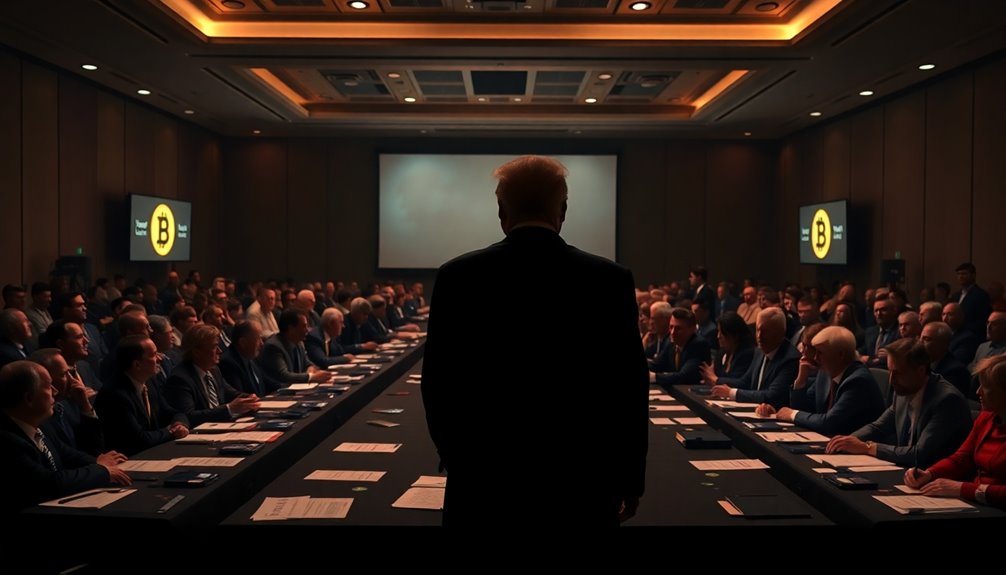You might have noticed the shift in how Trump approached crypto politics, moving from a formal council to informal summits. These gatherings bring together industry leaders to discuss pressing issues, but they also spark debates about the depth of policy development. As centralized and decentralized interests clash, you can't help but wonder how this impacts the future of regulation and innovation in the crypto space. What does this mean for the industry moving forward?

As President Trump navigates the evolving landscape of digital assets, his recent executive order signals a significant shift in U.S. crypto politics. Signed on January 23, 2025, the order, titled "Strengthening American Leadership in Digital Financial Technology," outlines an ambitious agenda focused on promoting innovation, regulatory clarity, and financial inclusivity. By banning the establishment of a U.S. central bank digital currency (CBDC) while expressing support for USD-backed stablecoins, Trump's administration is taking a bold stance that could reshape the sector's trajectory.
President Trump's recent executive order marks a pivotal change in U.S. crypto politics, emphasizing innovation and regulatory clarity in digital assets.
The initial proposal for a formal crypto council has transformed into plans for informal summits, which might better reflect the fragmented nature of the industry. These summits would involve rotating industry leaders and cover specific policy issues like banking, payments, and Bitcoin mining. While some industry players see this shift as pragmatic, others worry it sidesteps deeper, meaningful policy development.
There's a palpable tension as internal divisions within the crypto world become more pronounced, making it essential for the administration to navigate these complexities wisely.
The executive order emphasizes the importance of regulatory clarity, aiming to foster innovation in digital assets and blockchain technology. By establishing clear, technology-neutral regulatory frameworks, the order seeks to protect access to open public blockchain networks and define jurisdictional boundaries for regulatory agencies.
While this approach could promote financial inclusivity, it appears to place less emphasis on risk management compared to previous policies.
Amid these developments, the notion of a national digital asset stockpile is under evaluation, with discussions around a strategic Bitcoin reserve gaining traction among some stakeholders. However, concerns about volatility loom large, leading to debates about the practicality of such reserves.
The Senate Panel on Digital Assets supports legislation for this initiative, highlighting the diverse interests and fragmented nature of the crypto industry.
Conflicts between centralized and decentralized projects create further complications, as Bitcoin maximalists and altcoin executives vie for influence. The tension surrounding the integration of crypto with traditional finance adds another layer of complexity.
With individual executives competing for power, the industry often resembles a "tribal market," where conflicting interests and ideologies shape the conversation.
Ultimately, as Trump's administration moves forward with its new approach, it'll need to strike a balance between fostering innovation and addressing the inherent divisions within the crypto landscape. The success of these informal summits and regulatory frameworks will play a crucial role in determining the future of U.S. crypto politics.









